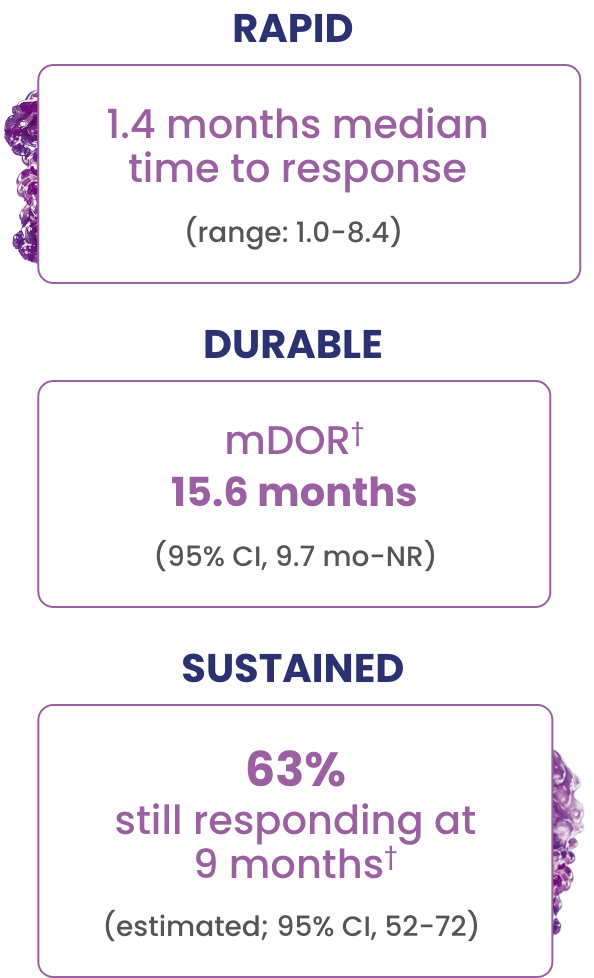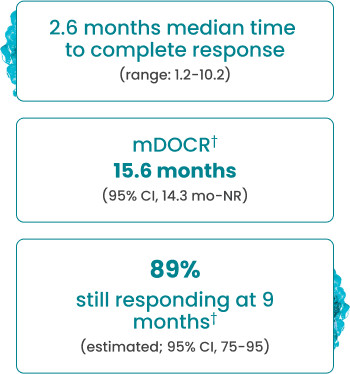
EPKINLY delivered an ORR of 61%, with 38% of patients achieving a deep response of CR1
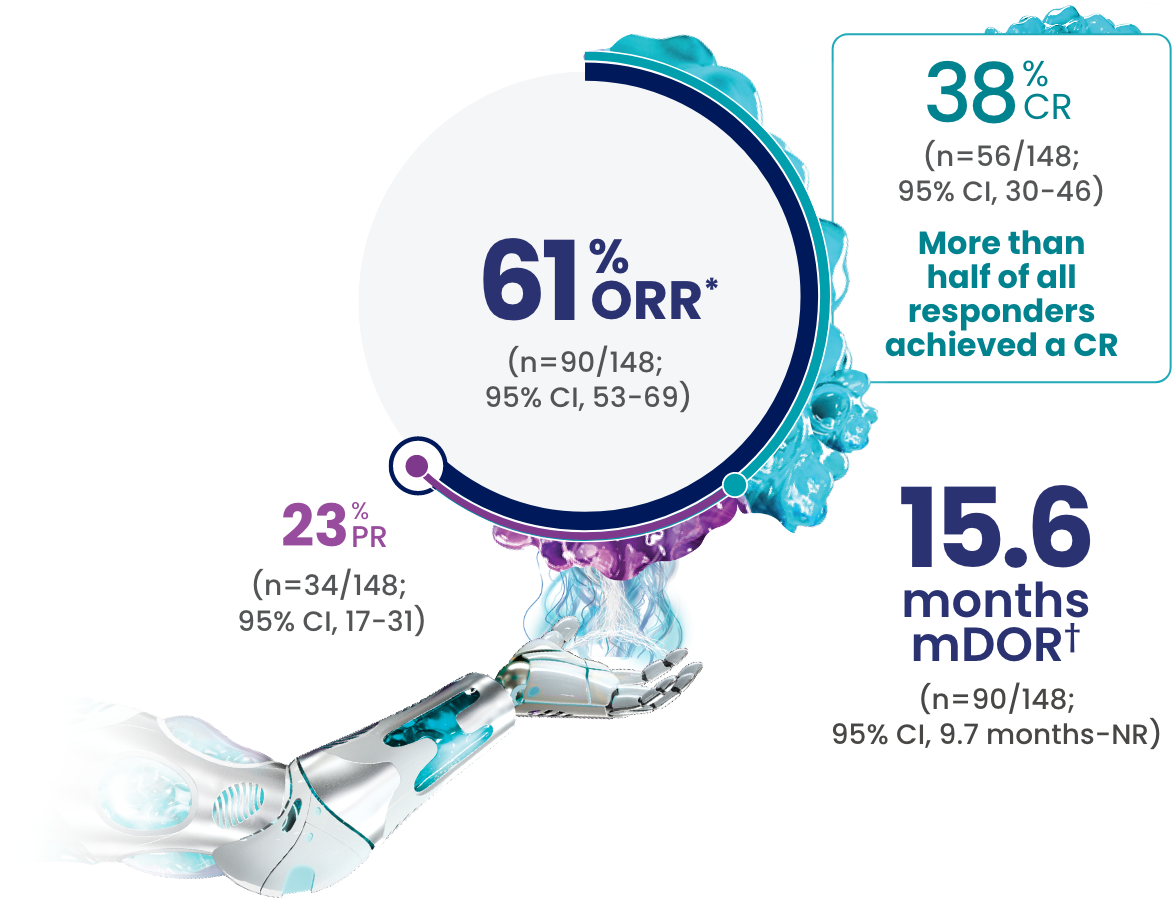
*Efficacy results determined by Lugano criteria (2014) as assessed by Independent Review Committee (IRC).
†Based on Kaplan-Meier estimate.
ORR, CR, and PR rates observed across additional subgroups1,2*
The efficacy of EPKINLY was evaluated in EPCORE NHL-1, an open-label, multicohort, multicenter, single-arm trial in 148 patients with R/R DLBCL after 2 or more lines of systemic therapy.

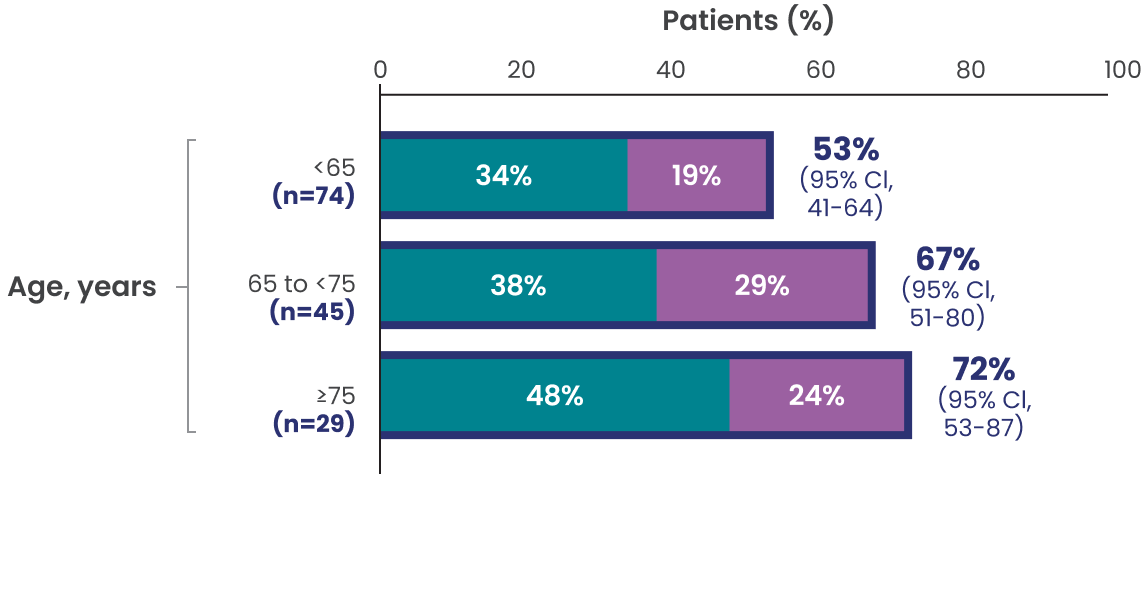
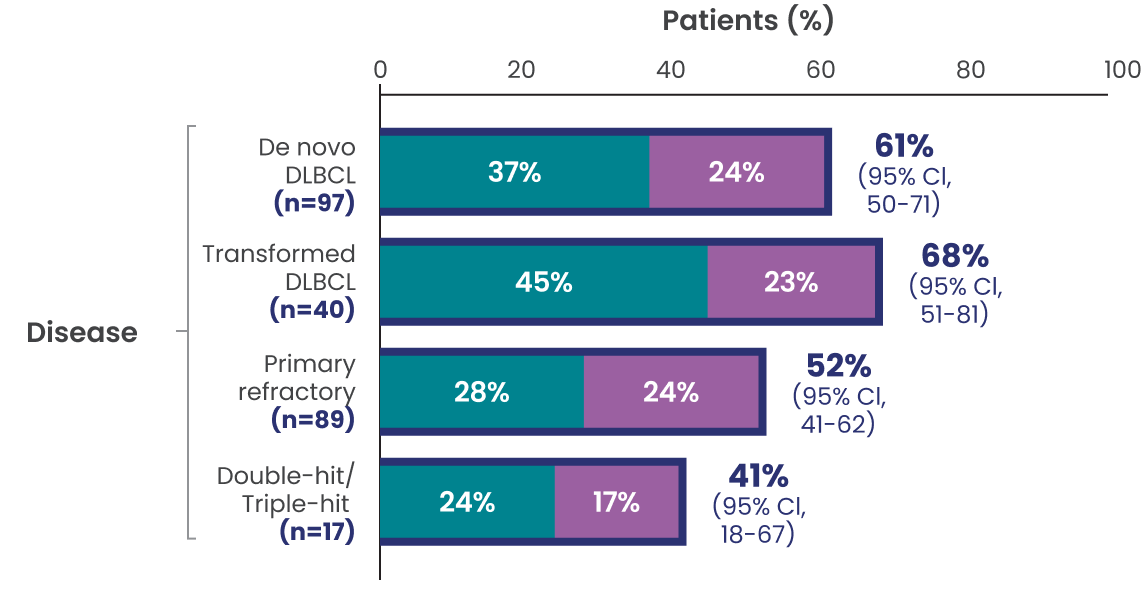
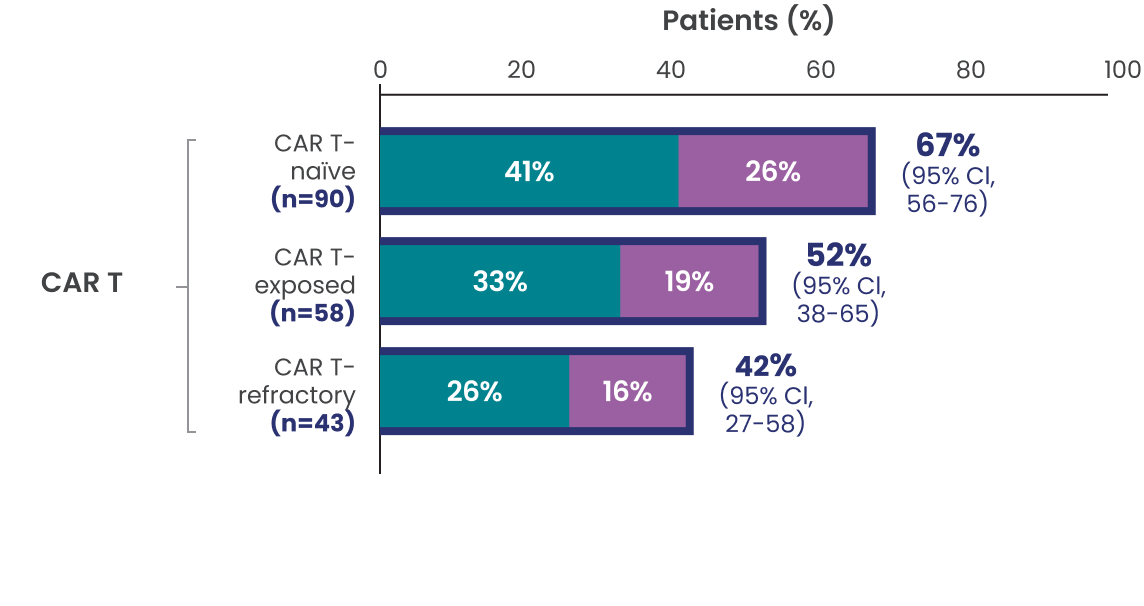
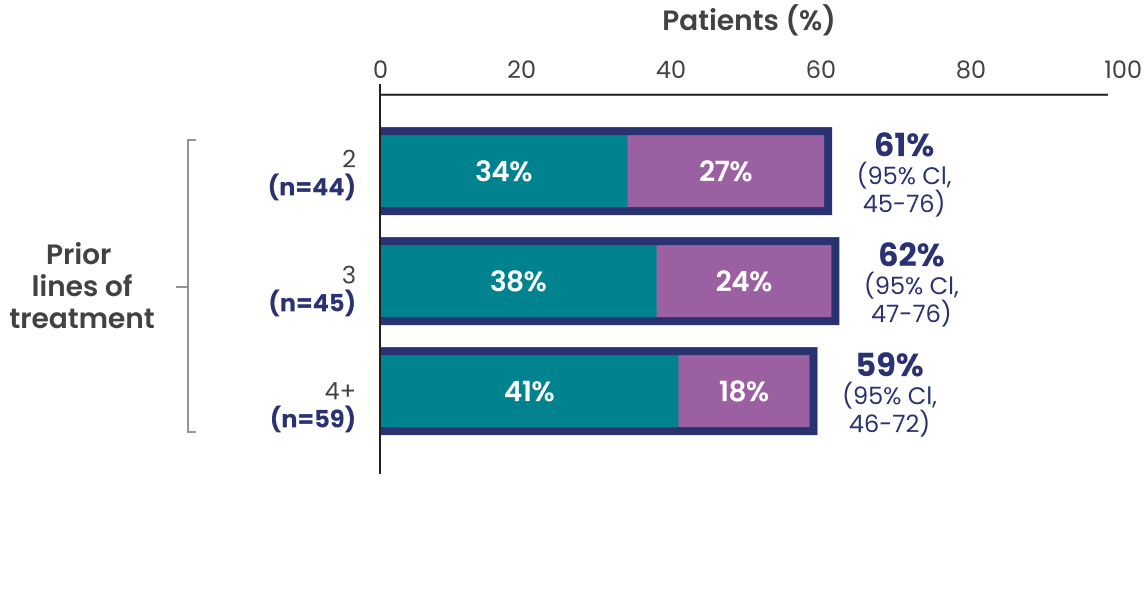
Data Limitation: Study was not powered to evaluate these prespecified subgroups. Data are exploratory and descriptive in nature. No formal inferences can be drawn.
*Efficacy results determined by Lugano criteria (2014) as assessed by Independent Review Committee (IRC).
In overall responders (61%, n=90/148), EPKINLY delivered durable responses in heavily pretreated 3L+ DLBCL, NOS patients1
- Complete responses were achieved as late as 10.2 months2
- The median follow-up for DOCR was 9.7 months (range: 8.3-12.1 months)2
†Based on Kaplan-Meier estimate.
Long-term follow-up data3
Investigator-assessed DOR and DOCR at a median study follow-up of 3 years*
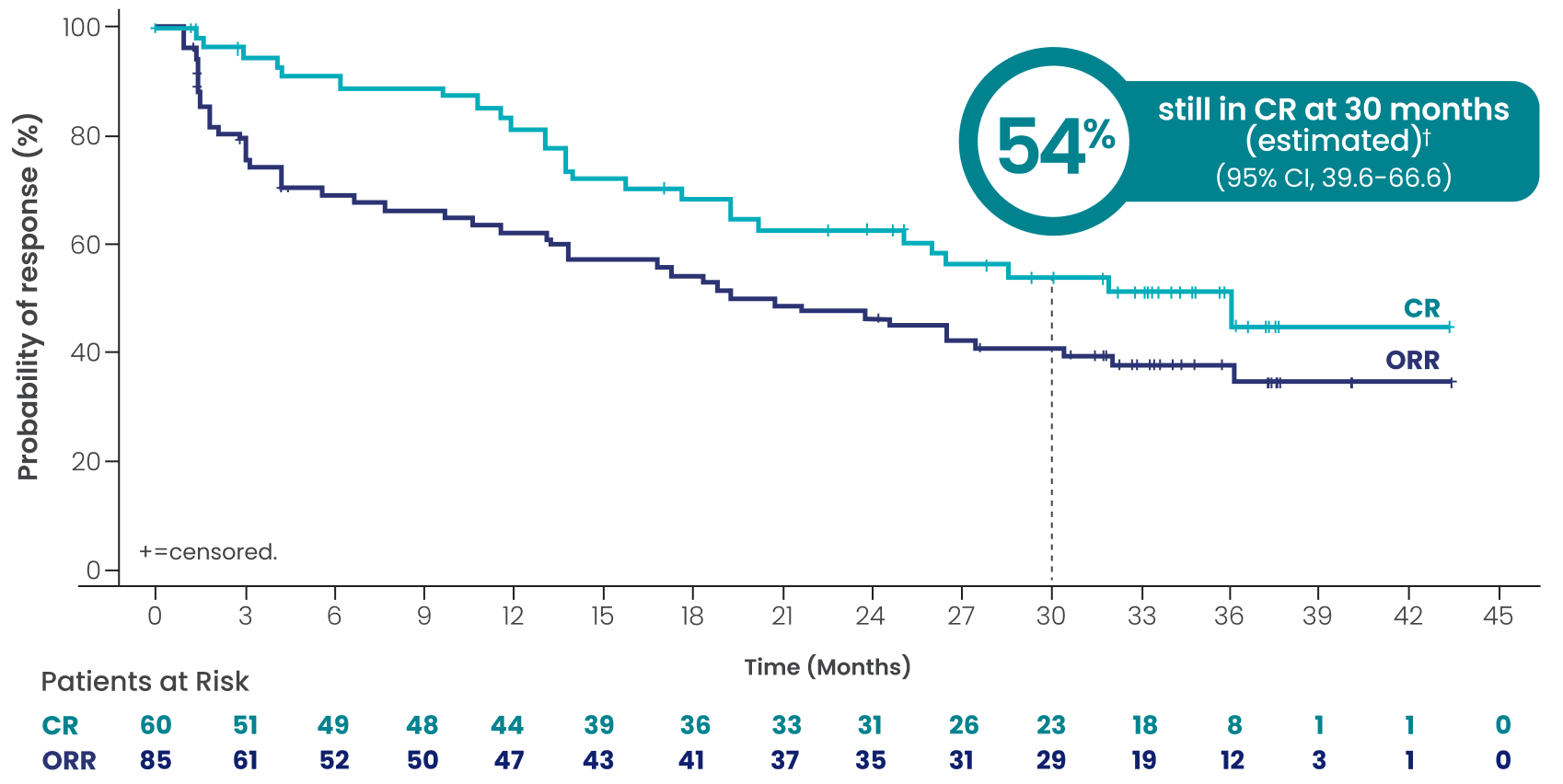
ORR=57.4% (n=85/148; 95% CI, 49.0-65.5)
CR=40.5% (n=60/148; 95% CI, 32.6-48.9)
PR=16.9% (n=25/148; 95% CI, 11.2-23.9)
mDOCR†‡ 36.1 months
(95% CI, 20.2-NR)
mDOR†‡ 20.8 months
(95% CI, 13.0-32.0)
Overall median study follow-up was 37.2 months (range: 0.3+, 45.4).§
Efficacy results determined by Lugano criteria per investigator assessment (INV).
Data cutoff: May 3, 2024.
Long-term follow-up: Safety data3
- With a median study follow-up of 3 years, observations were consistent with the known epcoritamab safety profile. Discontinuation due to an adverse reaction occurred in 7.6% of patients
- Serious infections were reported in 31% of patients. Serious infections ≥5% were COVID-19 events§ (17% of patients) and pneumonia (5% of patients). Fatal infections occurred in 14 patients, of which 10 were COVID-19 events||
No inference can be drawn from this data set. Follow-up analysis is exploratory and data are descriptive in nature.
The Kaplan-Meier estimates may be unreliable at the tail end of the curve due to a smaller number of patients at risk.
Overall median study follow-up was 37.2 months (range: 0.3+, 45.4).§
*Efficacy results determined by Lugano criteria (2014) as assessed by Independent Review Committee (IRC).
†Based on Kaplan-Meier estimate.
‡Median follow-up for DOR was 33.6 months (range: 32.7-37.2 months). Median follow-up for DOCR was 33.4 months (range: 31.8-34.9 months).||
§Based on reverse Kaplan-Meier estimate.
||COVID-19 events represent COVID-19 and COVID-19 pneumonia.
3L=third line; CAR T=chimeric antigen receptor T-cell therapy; CI=confidence interval; CR=complete response; DOCR=duration of complete response; DOR=duration of response; DLBCL=diffuse large B-cell lymphoma; HSCT=hematopoietic stem cell transplant; IRC=Independent Review Committee; mDOCR=median duration of complete response; mDOR=median duration of response; NOS=not otherwise specified; NR=not reached; ORR=overall response rate; PR=partial response.

Find out more about clinical trial treatment-related adverse reactions that occurred with EPKINLY



